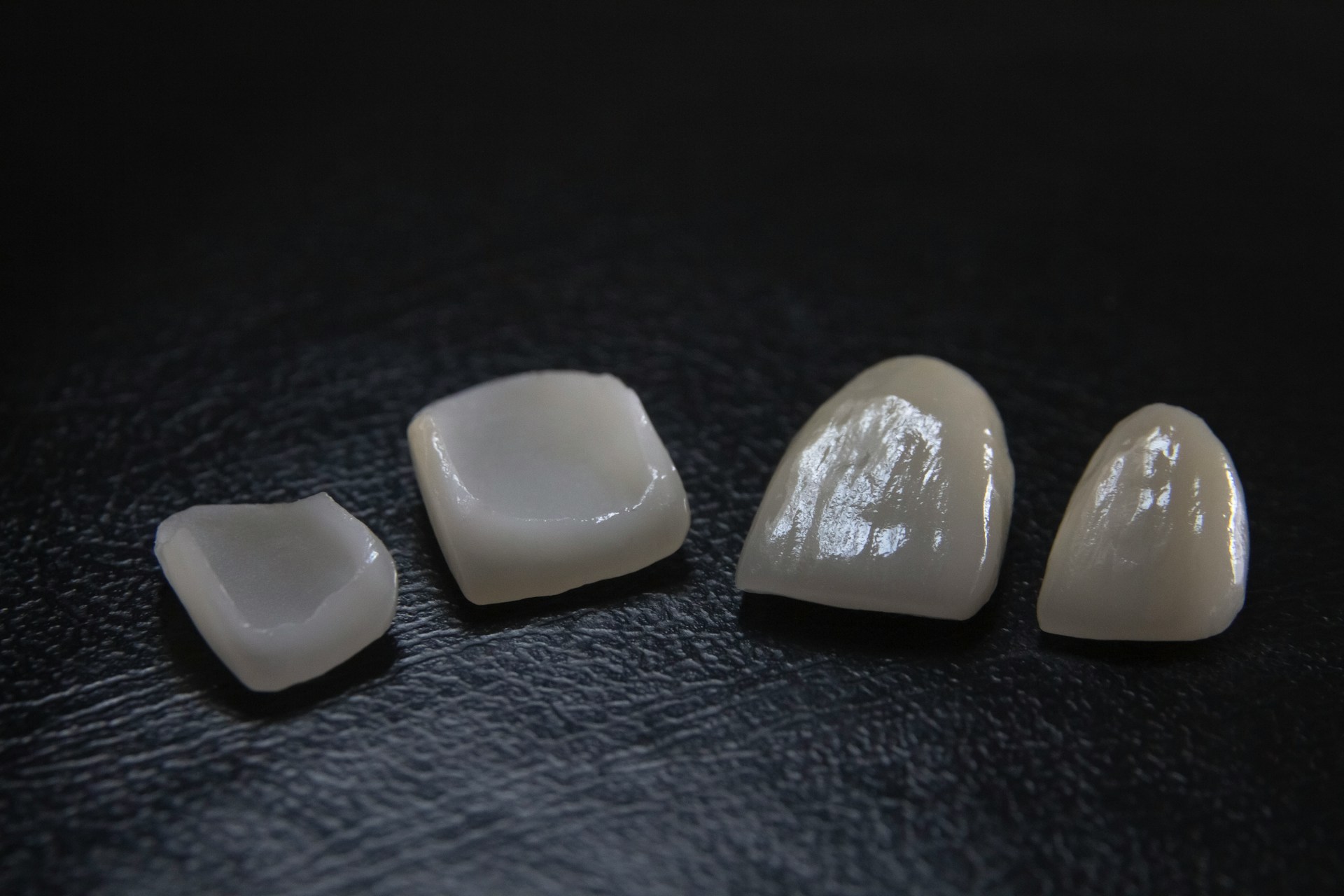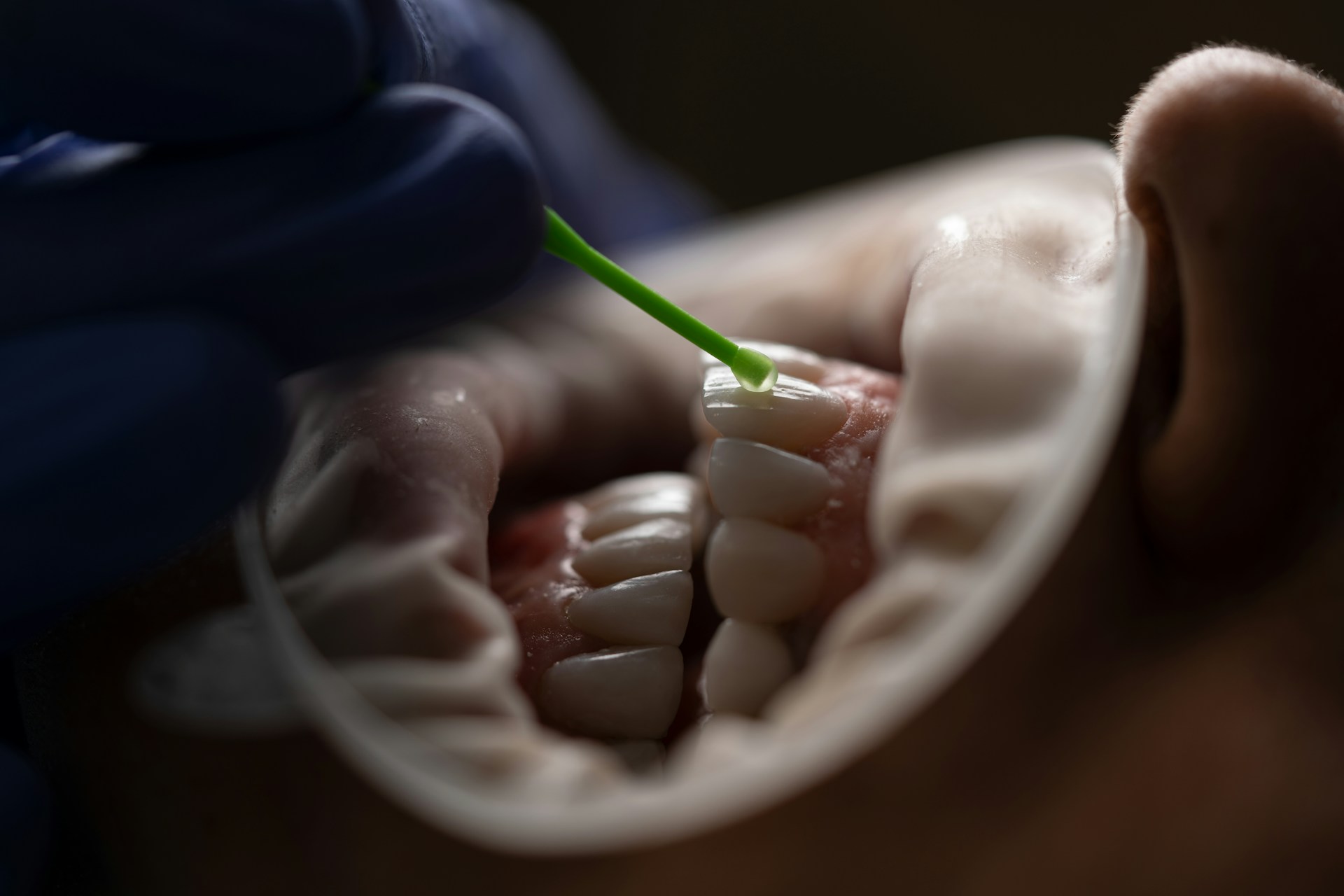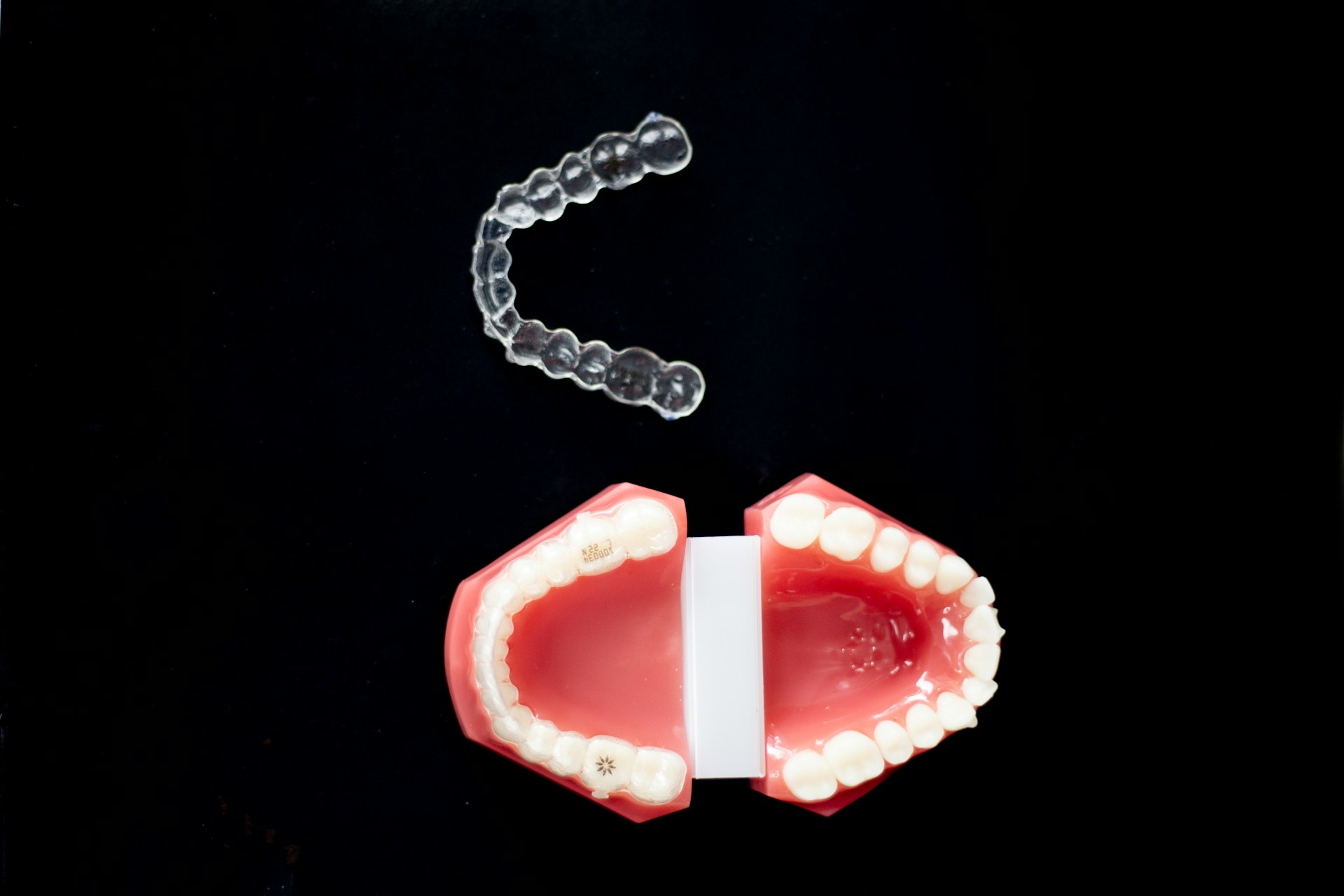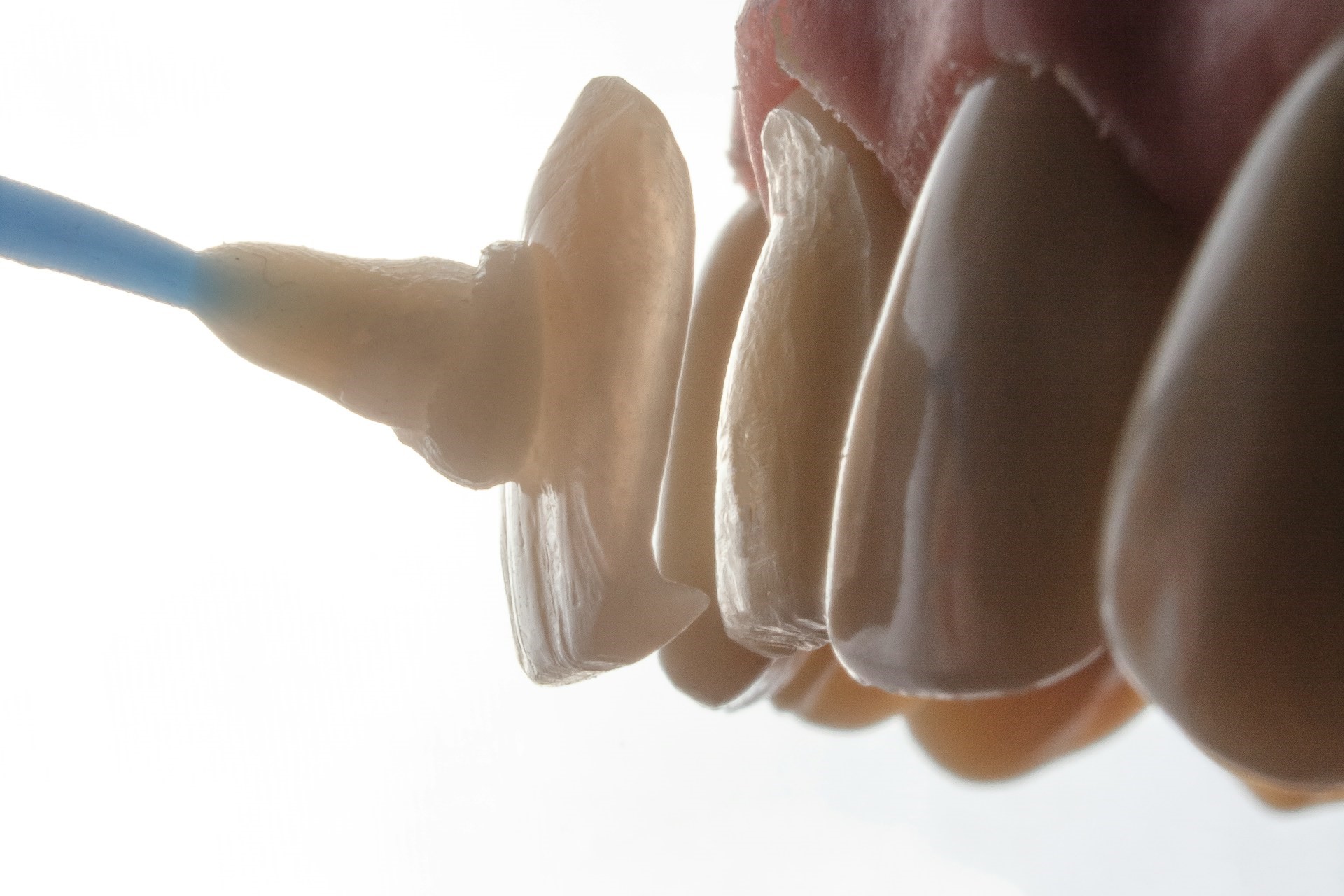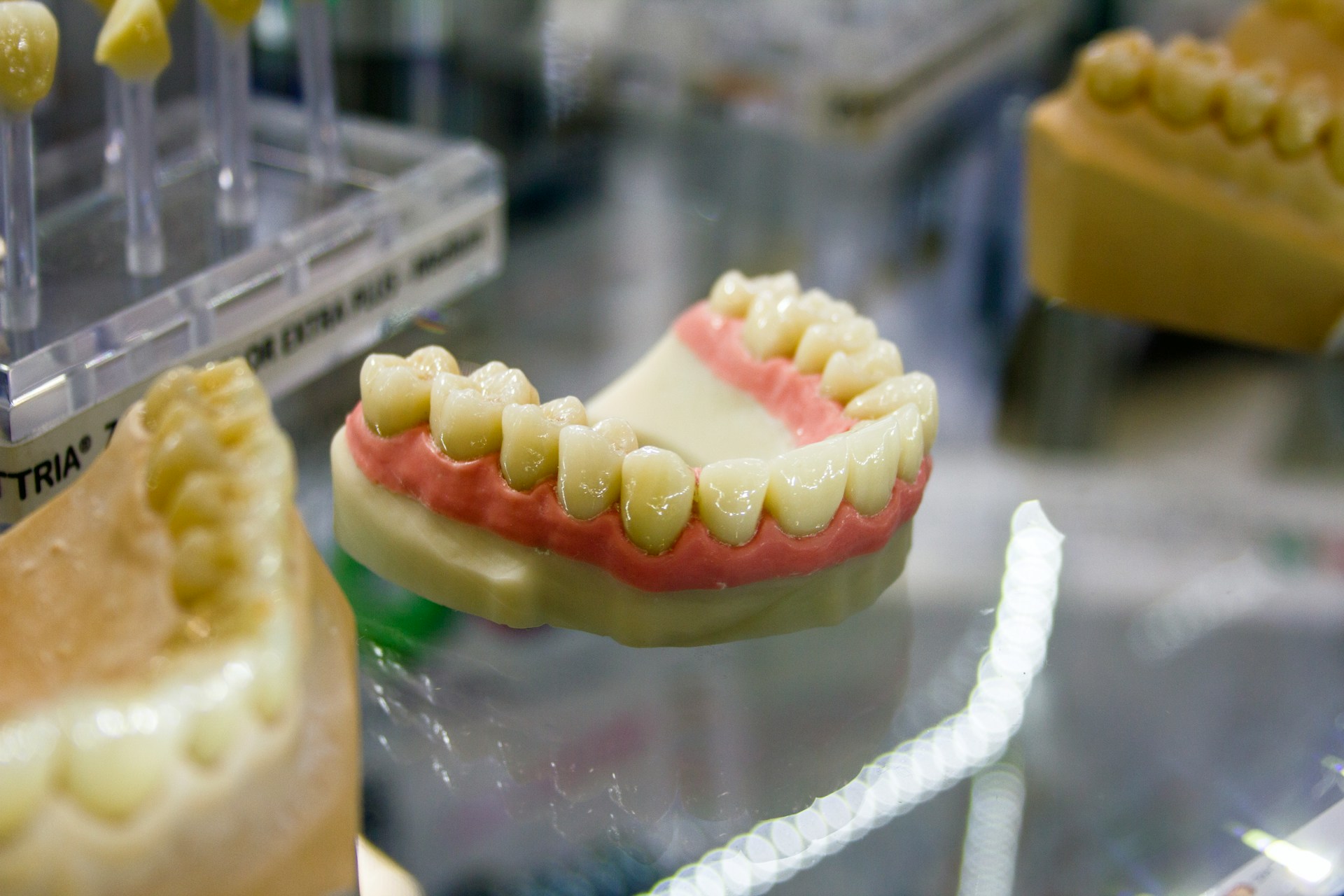For those seeking to enhance their smile, dental veneers and Lumineers are widely regarded options that can significantly transform the appearance of one’s teeth.
Both treatments provide aesthetic enhancements, yet they feature distinct characteristics and procedures. This article delves into the similarities and differences between dental veneers vs Lumineers, aiding you in determining which option may be more suitable for your needs.
From preparation processes and durability to veneer costs and maintenance, this guide encompasses all the essential information you should consider before making a decision on your smile makeover.
What Are Dental Veneers and Lumineers?
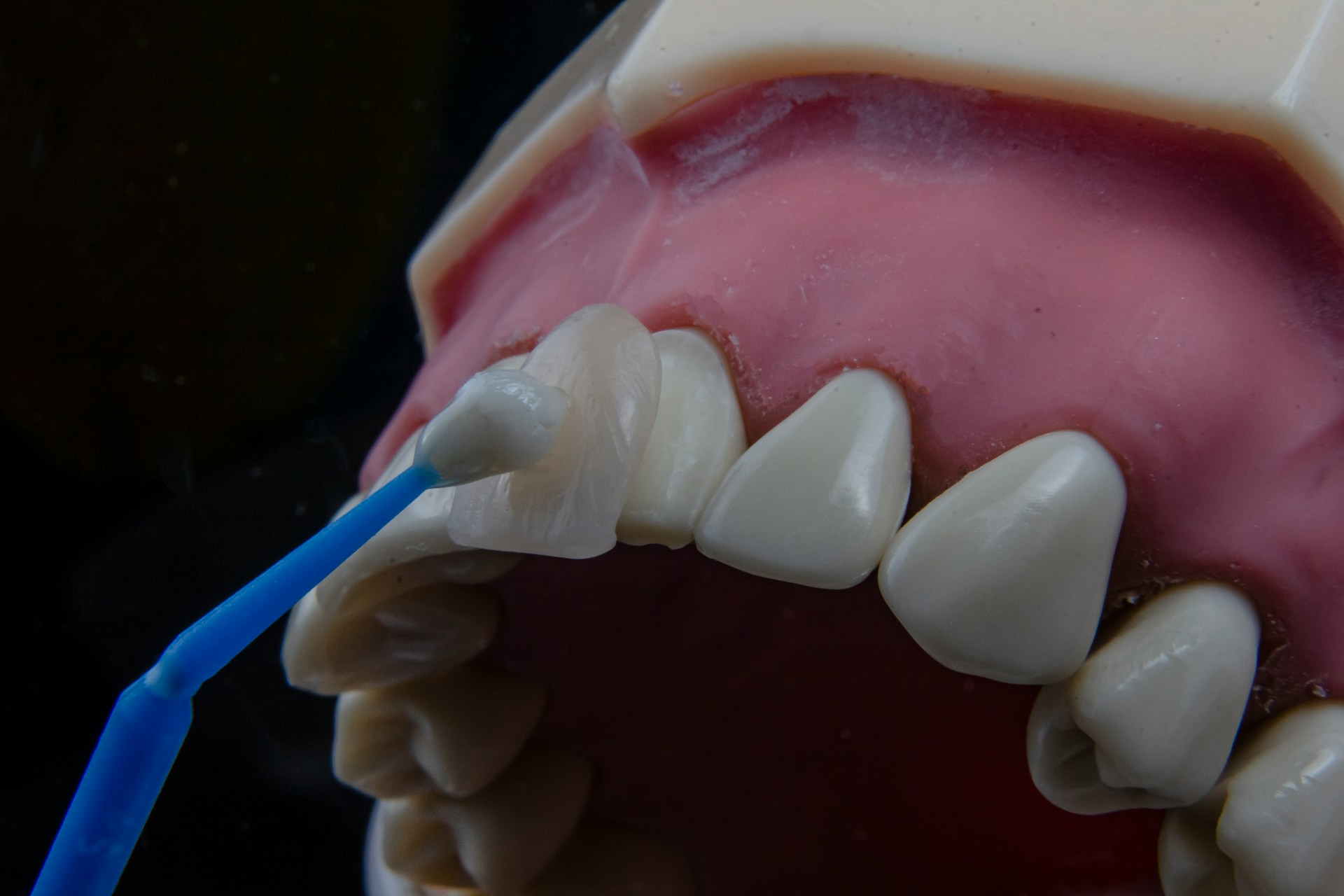
Dental veneers and lumineers are widely recognised options in cosmetic dentistry, aimed at enhancing the appearance of your smile by concealing imperfections such as chipped teeth, discolouration, or gaps.
These minimally invasive procedures can create a beautiful, natural-looking smile that greatly improves your overall dental aesthetics. Veneers are generally crafted from durable porcelain or resin materials, custom-fitted to match each patient’s unique tooth shape and colour.
The treatment process typically begins with a dental consultation where options, expectations, and application techniques are discussed, ensuring that each patient can achieve their desired aesthetic goals.
What Are the Similarities Between Dental Veneers and Lumineers?
Dental veneers and lumineers have quite a few similarities, which is why they are both popular options for individuals looking to enhance their smiles.
Each of these solutions is designed to improve the appearance of teeth by addressing issues such as discolouration, gaps, and minor misalignments, ultimately enhancing overall dental aesthetics.
They are usually custom-made to ensure a perfect fit, providing a non-invasive option for patients who want to achieve their aesthetic goals with minimal discomfort and downtime.
Moreover, both procedures focus on boosting patient satisfaction by delivering long-lasting and vibrant results.
What Are the Differences Between Dental Veneers and Lumineers?
Dental veneers and lumineers are both popular options for cosmetic treatment, but they have some important differences that can affect a patient’s decision.
For example, the preparation process is quite different; traditional dental veneers typically require some enamel removal to ensure they fit properly, while lumineers are designed to be ultra-thin and often need little to no preparation at all.
Furthermore, the durability and longevity of these treatments can vary, with veneers generally providing greater strength due to their thicker material.
Recognising these distinctions is essential for patients as they explore their choices for enhancing their smiles.
1. Preparation Process
The preparation process for dental veneers and Lumineers plays a significant role in influencing a patient’s decision. Dental veneers typically require a more invasive approach, involving some removal of enamel to ensure a precise fit and stabilization of the veneer on the tooth surface.
On the other hand, Lumineers are crafted as a non-invasive solution, often requiring no alteration to the natural tooth structure, which prioritizes enamel preservation. This distinction can be particularly appealing to patients who value comfort and seek to avoid the anxiety often associated with invasive dental procedures.
During your consultation, it’s essential to ask questions to your dentist, such as the differences in preparation, potential sensitivity, and long-term results between veneers and Lumineers. For example, while traditional veneers may involve careful bonding that can occasionally lead to sensitivity during the preparation phase, Lumineers offer a gentler process that minimizes discomfort.
By addressing these questions with your dentist, you can make an informed decision that aligns with your aesthetic goals and comfort preferences, ensuring not just a beautiful smile but also a positive and comfortable treatment experience.
2. Thickness
One of the most significant distinctions between dental veneers and lumineers lies in their thickness, which can greatly influence both the application technique and aesthetic outcomes. Dental veneers are generally thicker, which enhances their durability and strength; however, this may necessitate more extensive enamel removal during the preparation process.
In contrast, lumineers are recognised for their ultra-thin design, typically measuring around 0.2 mm. This feature allows for a more conservative approach while still maintaining excellent translucency and light reflection to achieve a natural appearance.
The thickness of the veneers is essential not only for durability but also for how light interacts with their surfaces, ultimately affecting the overall aesthetic appeal. Thicker veneers tend to reflect light differently, resulting in a more vibrant and opaque look, which may satisfy those seeking a bold smile.
On the other hand, the ultra-thin design of lumineers enhances translucency, closely mimicking the natural appearance of enamel and providing a softer, more subtle finish that some patients may prefer.
Ultimately, understanding the implications of veneer thickness is crucial for aligning treatment outcomes with patient expectations. This knowledge ensures a customised approach that balances both beauty and longevity in the final results.
3. Durability
Durability is an important factor to consider when comparing dental veneers and lumineers, as it can significantly influence patients’ long-term satisfaction.
Dental veneers are typically recognised for their strength and resistance to wear, often lasting over a decade with appropriate maintenance and care. On the other hand, lumineers, while also durable, may not provide the same level of longevity due to their thinner composition, which can make them more prone to chipping or cracking under certain conditions.
Therefore, it is essential for patients to assess their lifestyle and oral care habits when making their choice. Regular dental check-ups and adherence to recommended maintenance routines can greatly extend the lifespan of both options.
Many patient reviews indicate that those who commit to proper care—such as avoiding hard foods and maintaining good oral hygiene—report higher satisfaction rates.
Ultimately, understanding the differences in durability and maintenance requirements enables patients to make informed decisions that align with their individual needs and preferences.
4. Reversibility
Reversibility is an important factor for many patients when considering their options between dental veneers and lumineers. Traditional dental veneers involve the removal of enamel, which makes the process irreversible.
In contrast, lumineers provide a reversible option that allows for easier removal and adjustments to aesthetic goals in the future. This aspect of the treatment can significantly impact patient comfort and long-term satisfaction with their cosmetic procedures.
Understanding this reversible nature enables patients, allowing them to approach their aesthetic choices with greater confidence. The knowledge that they can revisit their decisions without facing permanent consequences often alleviates concerns about potential regret related to cosmetic work.
Consequently, many individuals feel more comfortable discussing their desires with their dental practitioners, fostering a collaborative approach to establishing a treatment plan that aligns with their evolving aesthetic preferences.
This flexibility not only enhances the patient experience but also enables adjustments based on changing trends and personal tastes, ultimately contributing to greater satisfaction with the final results.
Which One Is Better for You?

Deciding between dental veneers and lumineers can be quite a challenging choice for patients aiming to enhance their smiles. Several factors play a role in determining which option may be more suitable for individual needs.
Cost typically a primary consideration, as dental veneers often come with a higher upfront price due to the materials used and the preparation required. However, patients frequently also consider aesthetics, treatment options, and their long-term goals when making this decision.
It’s important for them to choose the solution that best aligns with their expectations.
1. Cost
When patients consider dental veneers and lumineers, cost often plays a significant role in their treatment decision-making process. Dental veneers generally come with a higher price tag due to the materials used and the extensive preparation required. In contrast, lumineers can provide a more budget-friendly alternative because of their minimally invasive technique.
It is essential for patients to also take into account their insurance coverage and potential financing options to help achieve their desired smile without placing undue financial burden on themselves.
Ultimately, understanding the cost differences between these two options can enable patients to make more informed choices. The price of dental veneers can vary considerably depending on the type of ceramic selected and the complexity of the procedure. On the other hand, lumineers typically require fewer visits and less preparation, contributing to their lower overall cost.
It’s important to note that not all insurance plans cover cosmetic procedures, so reviewing policy details is crucial for assessing potential out-of-pocket expenses. Additionally, financing options can be a significant factor, as many dental practices offer flexible payment plans designed to accommodate a variety of budgets, allowing patients to prioritise their dental health without compromising their financial well-being.
2. Aesthetics
Aesthetics play a crucial role for many patients when choosing between dental veneers and lumineers, as each option offers distinct visual advantages. Dental veneers are well-regarded for their custom-fit capability, which enables precise shade matching to blend seamlessly with the surrounding teeth, resulting in a natural-looking smile.
On the other hand, lumineers, known for their attractive appearance, may have some limitations in terms of customisation due to their thinner design, yet they still provide excellent translucency and light reflection.
Ultimately, the decision between these two options often depends on the individual’s specific aesthetic goals. When applied with care, dental veneers can enhance the contours and subtleties of a patient’s smile, contributing to a more harmonious overall look. Conversely, lumineers are frequently preferred for their less invasive application, allowing individuals to achieve a whiter, brighter smile without significantly altering their natural teeth.
For many patients, the visual impact of both choices greatly enhances their confidence and satisfaction, as both options strike a pleasing balance between beauty and functionality in restoring one’s smile.
3. Time Frame
The time frame required for treatment is an important factor to consider when deciding between dental veneers and lumineers.
Typically, the application of dental veneers involves multiple appointments, including dental impressions, consultations, and follow-up visits for adjustments, which can extend the overall treatment time.
In contrast, lumineers can often be placed in a single visit due to their simplified application technique, making them a quicker option for patients eager to achieve a smile makeover.
This difference in appointment frequency can significantly affect patient comfort. Fewer visits often lead to reduced anxiety and a more streamlined experience.
The faster application of lumineers provides immediate satisfaction, which can enhance the perception of treatment success. On the other hand, while opting for veneers may result in a more customised final outcome, the multiple steps involved require greater patience and commitment to the process.
Considering personal preferences and scheduling needs can be helpful in making the most suitable choice between these two options.
4. Maintenance
Maintenance is an essential consideration after receiving dental veneers or lumineers, as proper oral hygiene is critical for ensuring their longevity. Patients should consistently practice good dental hygiene, including brushing and flossing, to prevent staining and enhance the durability of both options.
It is worth noting that dental veneers may require more diligent maintenance because they tend to wear down over time, unlike lumineers, which are specifically designed to be more stain-resistant and durable.
Along with standard oral care routines, individuals should be mindful of avoiding acidic foods and beverages, as these can compromise the bond of both veneers and lumineers. Regular dental check-ups are also advisable, as a dental professional can identify potential issues early on and provide personalised guidance tailored to each individual’s needs.
Educating patients plays a crucial role in maintaining these cosmetic enhancements. Understanding the differences in materials and their specific requirements enables individuals to make informed decisions regarding their dental care.
Ultimately, adopting a proactive approach will help preserve the appearance and functionality of these dental solutions for years to come.
How Are Dental Veneers and Lumineers Placed?

The placement process for dental veneers and lumineers is essential for achieving the desired aesthetic results, with specific techniques designed for each option.
Regarding dental veneers, the procedure usually starts with taking dental impressions to ensure a custom fit. This is followed by preparing the teeth and, ultimately, bonding the veneers securely in place.
In contrast, lumineers can often be applied with minimal preparation. They employ an innovative application technique that emphasizes a more straightforward placement process.
1. Dental Veneers Placement Process
The process of placing dental veneers involves several important steps to ensure successful bonding and optimal cosmetic results.
It begins with a dental consultation where the professional evaluates the patient’s needs and creates a customised treatment plan. Following this, dental impressions are taken, and the teeth are prepared by lightly buffing the enamel to facilitate a secure bonding process, which usually takes place during a subsequent appointment at the dental clinic.
After the preparation, temporary veneers may be used to protect the smile while the custom veneers are being crafted. At this point, it is essential for patients to communicate any concerns they may have regarding the shape, colour, or fit of the veneers. This allows dental professionals to make any necessary adjustments to the designs.
Once the permanent veneers are ready, another visit to the dental clinic is required for fitting and bonding. During this appointment, dental professionals will carefully place the veneers, ensuring they align perfectly with the patient’s natural teeth.
This meticulous attention to detail during the bonding process is crucial, as it significantly impacts the longevity and functionality of the veneers, ultimately transforming the patient’s smile into one that exudes confidence and beauty.
2. Lumineers Placement Process
The placement process for lumineers is intentionally designed to be more straightforward and less invasive than traditional dental veneers. It begins with an initial consultation where aesthetic goals are discussed.
Following this, the dentist takes dental impressions to ensure the lumineers will fit perfectly. The innovative application technique permits the lumineers to be placed directly onto the teeth without significant enamel removal, which prioritises patient comfort while still achieving excellent aesthetic results.
This approach not only preserves the natural tooth structure but also minimises any discomfort that might arise from more invasive procedures. Once the impressions are ready, custom lumineers are crafted to meet the patient’s specific requirements.
During the actual placement, the dentist meticulously assesses each lumineer for fit and colour, ensuring that they harmonise with the patient’s existing smile for a natural appearance.
This careful attention to detail reassures patients that their comfort is of the utmost importance, making lumineers an appealing choice for those looking to enhance their smile without the need for painful dental interventions.
What Are the Benefits of Dental Veneers and Lumineers?

Dental veneers and lumineers present a variety of advantages that explain their growing popularity in the field of cosmetic dentistry. These options allow patients to enhance their smiles and improve their overall dental aesthetics.
Both treatments can effectively correct imperfections, including chipped teeth, discolouration, and gaps, leading to a more confident smile. Furthermore, they provide long-lasting results and are resistant to stains, making them a valuable investment for anyone considering a smile makeover.
1. Improved Appearance
One of the most notable advantages of dental veneers and lumineers is the remarkable improvement in appearance they offer, often transforming smiles into striking representations of confidence and beauty. Both options effectively address common dental imperfections, such as chipped teeth, gaps, and discolouration, leading to a more aesthetically pleasing smile that can enhance an individual’s self-esteem and overall quality of life. This focus on aesthetics is a primary motivator for many patients seeking these cosmetic procedures.
Incorporating these innovative treatments into a smile makeover allows patients to enjoy results that not only look natural but also feel comfortable. Dental veneers and lumineers are designed to reflect light in a manner similar to natural teeth, ensuring they blend seamlessly with the existing smile.
Many individuals discover that their newfound confidence in their appearance encourages greater social interactions and opens up improved professional opportunities, all thanks to the transformative power of these procedures.
Ultimately, achieving a radiant smile through dental veneers or lumineers plays a significant role in patient satisfaction, reinforcing their decision to enhance their smile.
2. Stain Resistance
Stain resistance is a significant advantage of both dental veneers and lumineers, making them an attractive option for individuals who desire a long-lasting and vibrant smile. Both types of veneers are engineered to resist discolouration from common staining agents such as coffee, tea, and tobacco. With proper maintenance and oral hygiene, individuals can enjoy a consistently bright smile. This characteristic contributes to the longevity of the treatments, allowing patients to appreciate their enhanced aesthetics for many years.
Moreover, this property not only improves the visual appeal of the smile but also simplifies the daily oral care routine. Patients can feel more confident enjoying their favourite beverages without the constant concern of staining, as routine brushing and flossing are generally sufficient for maintenance.
This ease of upkeep makes dental veneers and lumineers a practical choice for those with busy lifestyles, as they typically require fewer professional whitening treatments compared to natural teeth. Ultimately, the stain-resistant quality ensures that recipients can effortlessly maintain their radiant smiles, making a compelling case for these innovative cosmetic solutions.
3. Fixing Minor Dental Issues
Dental veneers and lumineers offer an effective means of addressing minor dental issues, allowing patients to achieve their desired smile without the necessity of extensive procedures.
Whether dealing with chipped teeth, slight misalignments, or superficial discolouration, both options can significantly enhance the appearance of one’s smile by creating a more uniform and aesthetically pleasing look. This quality makes them a popular choice for those seeking a quick smile makeover.
These cosmetic enhancements serve as a bridge between natural teeth and ideal aesthetics, facilitating a seamless transformation. Many patients appreciate how veneers and lumineers can effectively mask imperfections while still maintaining a natural appearance, which boosts their confidence in social situations.
By educating patients on the distinctions between these two approaches, dental professionals can assist clients in making informed choices that cater to their specific dental needs. The durability and stain resistance of both dental options further contribute to their long-lasting results, solidifying their role in contemporary cosmetic dentistry.
4. Long-lasting Results
Both dental veneers and lumineers provide long-lasting results, making them a worthwhile investment for individuals looking to enhance their smiles. While the durability of each option can vary based on factors such as material and care, dental veneers typically last over a decade, while lumineers can deliver excellent results for several years with proper maintenance. This level of durability allows patients to enjoy their enhanced smile without the frequent need for replacements or extensive follow-up treatments.
To truly maximise the lifespan of these cosmetic enhancements, regular dental check-ups and diligent oral hygiene practices are crucial. Consistent brushing and flossing not only help prevent decay but also preserve the integrity of the materials used in veneers and lumineers.
Additionally, patients who choose to limit stain-causing beverages and foods can improve the aesthetic appeal of their smiles, ensuring their dental investments remain in excellent condition. Ultimately, a commitment to proper maintenance is essential for ensuring both the longevity of veneers and high levels of patient satisfaction.
Frequently Asked Questions
What are Dental Veneers and Lumineers?
Dental Veneers and Lumineers are both cosmetic dental treatments that aim to improve the appearance of your teeth. They are thin, tooth-coloured shells that are bonded to the front surface of your teeth to enhance their size, shape, and colour.
What is the main difference between Dental Veneers vs Lumineers?
The main difference between Dental Veneers and Lumineers lies in their thickness and the amount of tooth preparation required. Veneers are thicker and require removal of some tooth structure, while Lumineers are thinner and can be placed without altering the natural tooth.
Which one is more suitable for me, Dental Veneers or Lumineers?
The choice between Dental Veneers and Lumineers is dependent on several factors such as the current condition of your teeth, your desired outcome, and your budget. Your dentist can evaluate your oral health and guide you in choosing the best option for you.
How long does the procedure for Dental Veneers and Lumineers take?
The placement of Dental Veneers and Lumineers typically takes two dental visits. During the first visit, your dentist will prepare your teeth and take impressions, while the second visit involves the bonding of the veneers or Lumineers. The entire process can take up to 2-3 weeks.
Are Dental Veneers and Lumineers permanent?
Both Dental Veneers and Lumineers are considered permanent dental procedures. However, the longevity of these treatments depends on proper oral hygiene and regular visits to the dentist for maintenance.
How do I take care of my Dental Veneers or Lumineers?
Taking care of your Dental Veneers or Lumineers is similar to taking care of your natural teeth. You should brush and floss regularly, avoid biting hard objects, and visit your dentist for regular cleanings and check-ups. It is also essential to avoid habits that can damage your veneers or Lumineers, such as nail-biting or using your teeth as tools.
